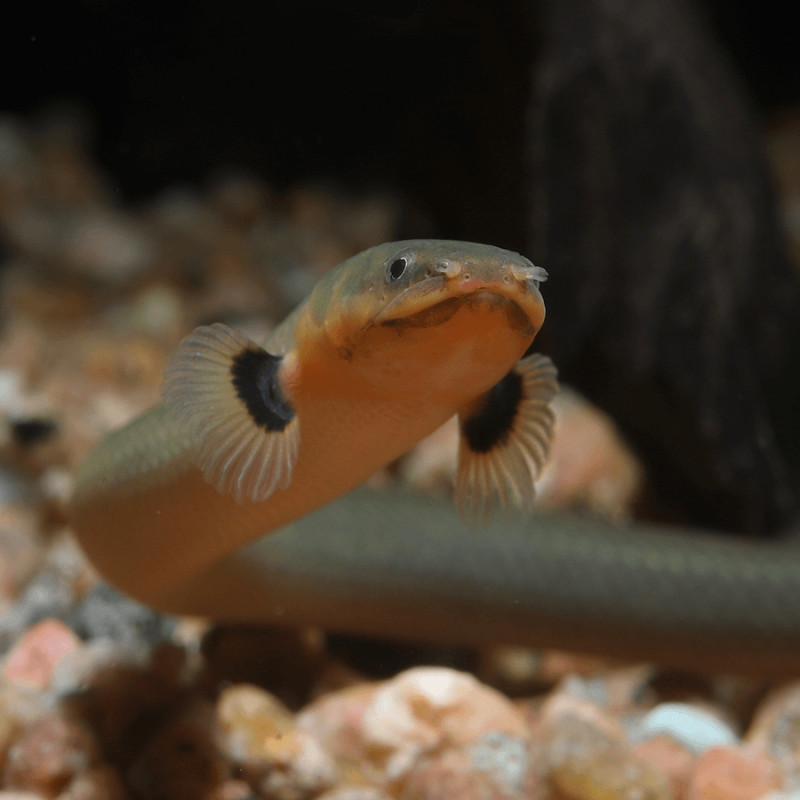More info
DATASHEET
| Minimum Tank Size | 540 litres / 142.65 US gallons |
| Maximum Size | 90.0cm / 35.43inches |
| Temperature | 23°C / 73.40°F - 30°C / 86.00°F |
| Hardness | 5-20ºdH |
| pH | 6.0-7.5 |
GENERAL DESCRIPTION
The Ropefish, also known as Reedfish or Snakefish, is the sole species in the Erpetoichthys genus, displaying hardiness and nocturnal behavior due to its poor vision, relying heavily on its keen sense of smell for locating food. Belonging to the Polypteridae family, this ancient species has intriguing adaptations like a divided swim bladder that aids in breathing out of water for short periods. Fossils of its ancestors date back to over 200 million years ago, showcasing its lineage's resilience and adaptability.
AQUARIUM SETUP
Creating an optimal environment for the Ropefish involves a densely planted aquarium with a soft substrate and strategically placed driftwood for hiding spots. A secure lid is crucial due to the fish's escape artist tendencies. Water conditions within the tank should ideally maintain a temperature between 23-30°C, a pH level of 6.0-7.5, and hardness ranging from 5-20°dH (see table for details).
BEHAVIOUR
While being peaceful and suitable for group settings, the Ropefish should not be housed with tankmates small enough to fit in its mouth. It can coexist harmoniously with larger characins, cichlids like Severum and Angelfish, and Synodontis species. However, it should not be kept with overly aggressive species that may outcompete it during feeding times.
FEEDING AND DIET
Primarily carnivorous, the Ropefish prefers live or frozen meaty foods such as prawns, earthworms, mussels, and bloodworms. While it may not readily accept dried foods, some individuals might consume pelleted varieties. Providing a varied diet rich in protein is crucial for maintaining the health and vitality of this species.
REPRODUCTION & DIMORPHISM
Reproduction of the Ropefish remains unrecorded in aquarium settings, highlighting a gap in understanding their breeding habits. Sexual dimorphism is observable in the number of dorsal fin rays, with males possessing 12-14 rays compared to females' 9-12. Additionally, during breeding conditions, the male's anal fin may swell and thicken, indicating maturity and potential spawning behavior.
HABITAT AND DISTRIBUTION
Naturally found in shallow, heavily vegetated waters of Western Africa, the Ropefish's distribution spans regions such as the Democratic Republic of Congo, Angola, Nigeria, Cameroon, Equatorial Guinea, and Benin. Its habitat preference underscores a need for lush plant cover and suitable hiding places to mimic its natural ecosystem.

